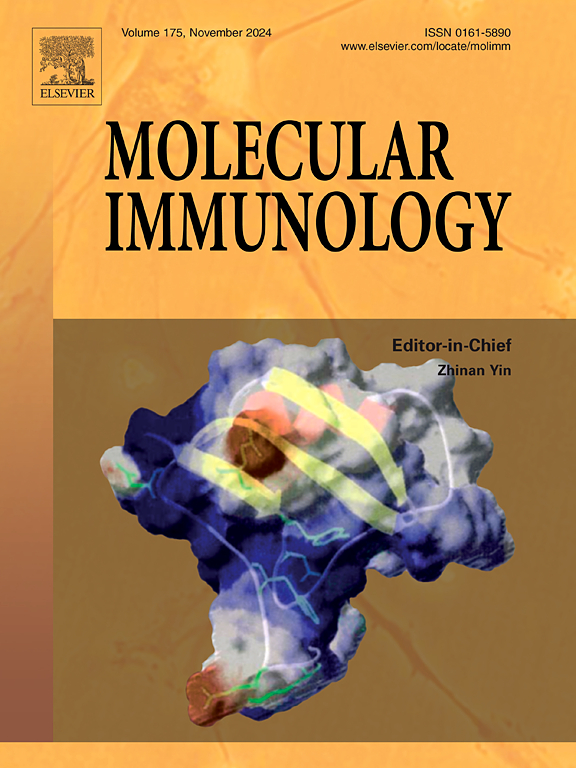Profiling of SFTS virus and host protein interactions by affinity purification-mass spectrometry
IF 3
3区 医学
Q2 BIOCHEMISTRY & MOLECULAR BIOLOGY
引用次数: 0
Abstract
Severe Fever with Thrombocytopenia Syndrome (SFTS), caused by the novel phlebovirus SFTSV (SFTS bunyavirus), was first identified in 2009 across several Chinese provinces, with a case fatality rate reaching 30 %. Given its compact genome, SFTSV critically depends on host cellular machinery for replication and pathogenesis. In this study, we employed a systematic strategy combining co-immunoprecipitation of viral-host complexes with formaldehyde crosslinking and affinity purification-mass spectrometry (AP-MS) to comprehensively map SFTSV-host interactions. We systematically analyzed protein complexes associated with all five viral structural/non-structural proteins (NP, NSs, Gc, Gn, and L), identifying 432 host proteins as potential viral interactors. Subsequent bioinformatic analysis included Gene Ontology categorization and functional domain/pathway enrichment analysis via KEGG, with interaction networks visualized through Cytoscape. Importantly, we experimentally validated key interactions between NSs and host proteins VDAC1, Vimentin, and HSP90AB1, demonstrating robust consistency with our mass spectrometry findings.
SFTS病毒与宿主蛋白相互作用的亲和纯化-质谱分析
由新型静脉病毒SFTSV (SFTS布尼亚病毒)引起的严重发热伴血小板减少综合征(SFTS)于2009年首次在中国几个省份被发现,病死率达到30% %。鉴于其紧凑的基因组,SFTSV严重依赖宿主细胞机制进行复制和发病。在这项研究中,我们采用了一种系统的策略,将病毒-宿主复合物的共免疫沉淀与甲醛交联和亲和纯化-质谱(AP-MS)相结合,以全面绘制sftsv -宿主相互作用。我们系统地分析了与所有五种病毒结构/非结构蛋白(NP、NSs、Gc、Gn和L)相关的蛋白复合物,确定了432种宿主蛋白是潜在的病毒相互作用物。随后的生物信息学分析包括通过KEGG进行基因本体分类和功能域/途径富集分析,并通过Cytoscape可视化相互作用网络。重要的是,我们通过实验验证了NSs与宿主蛋白VDAC1、Vimentin和HSP90AB1之间的关键相互作用,证明了与我们的质谱研究结果的强大一致性。
本文章由计算机程序翻译,如有差异,请以英文原文为准。
求助全文
约1分钟内获得全文
求助全文
来源期刊

Molecular immunology
医学-免疫学
CiteScore
6.90
自引率
2.80%
发文量
324
审稿时长
50 days
期刊介绍:
Molecular Immunology publishes original articles, reviews and commentaries on all areas of immunology, with a particular focus on description of cellular, biochemical or genetic mechanisms underlying immunological phenomena. Studies on all model organisms, from invertebrates to humans, are suitable. Examples include, but are not restricted to:
Infection, autoimmunity, transplantation, immunodeficiencies, inflammation and tumor immunology
Mechanisms of induction, regulation and termination of innate and adaptive immunity
Intercellular communication, cooperation and regulation
Intracellular mechanisms of immunity (endocytosis, protein trafficking, pathogen recognition, antigen presentation, etc)
Mechanisms of action of the cells and molecules of the immune system
Structural analysis
Development of the immune system
Comparative immunology and evolution of the immune system
"Omics" studies and bioinformatics
Vaccines, biotechnology and therapeutic manipulation of the immune system (therapeutic antibodies, cytokines, cellular therapies, etc)
Technical developments.
 求助内容:
求助内容: 应助结果提醒方式:
应助结果提醒方式:


